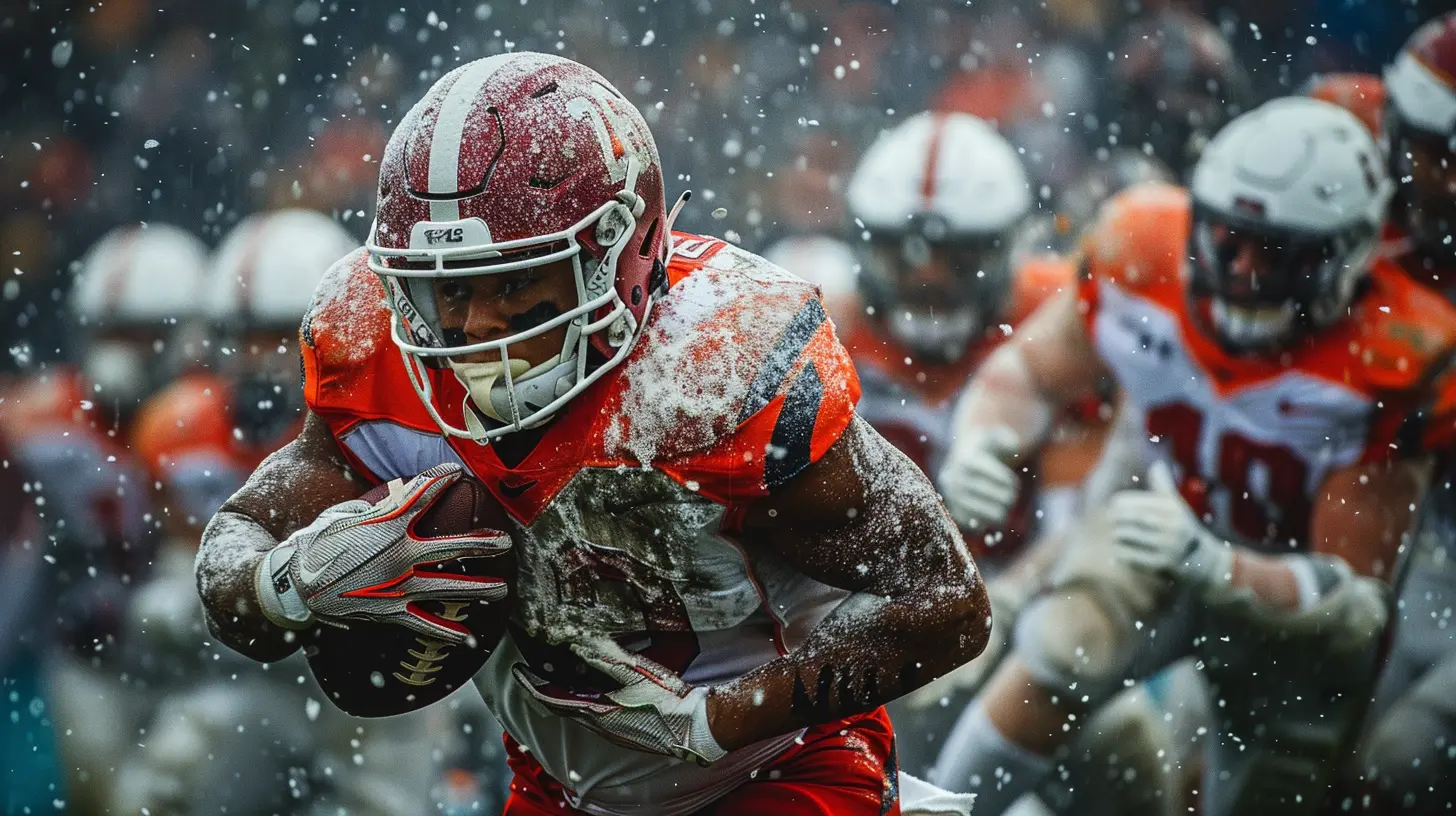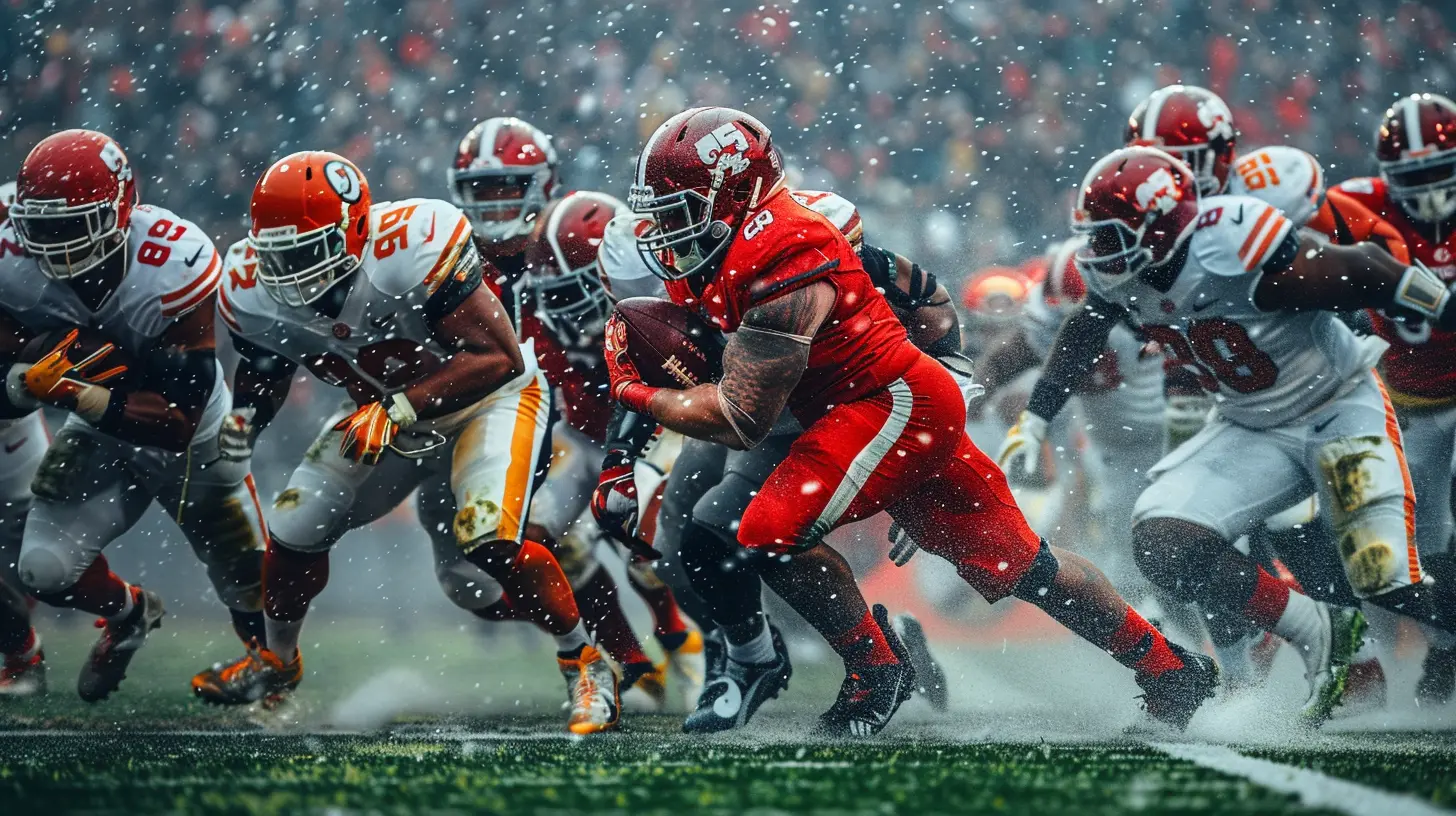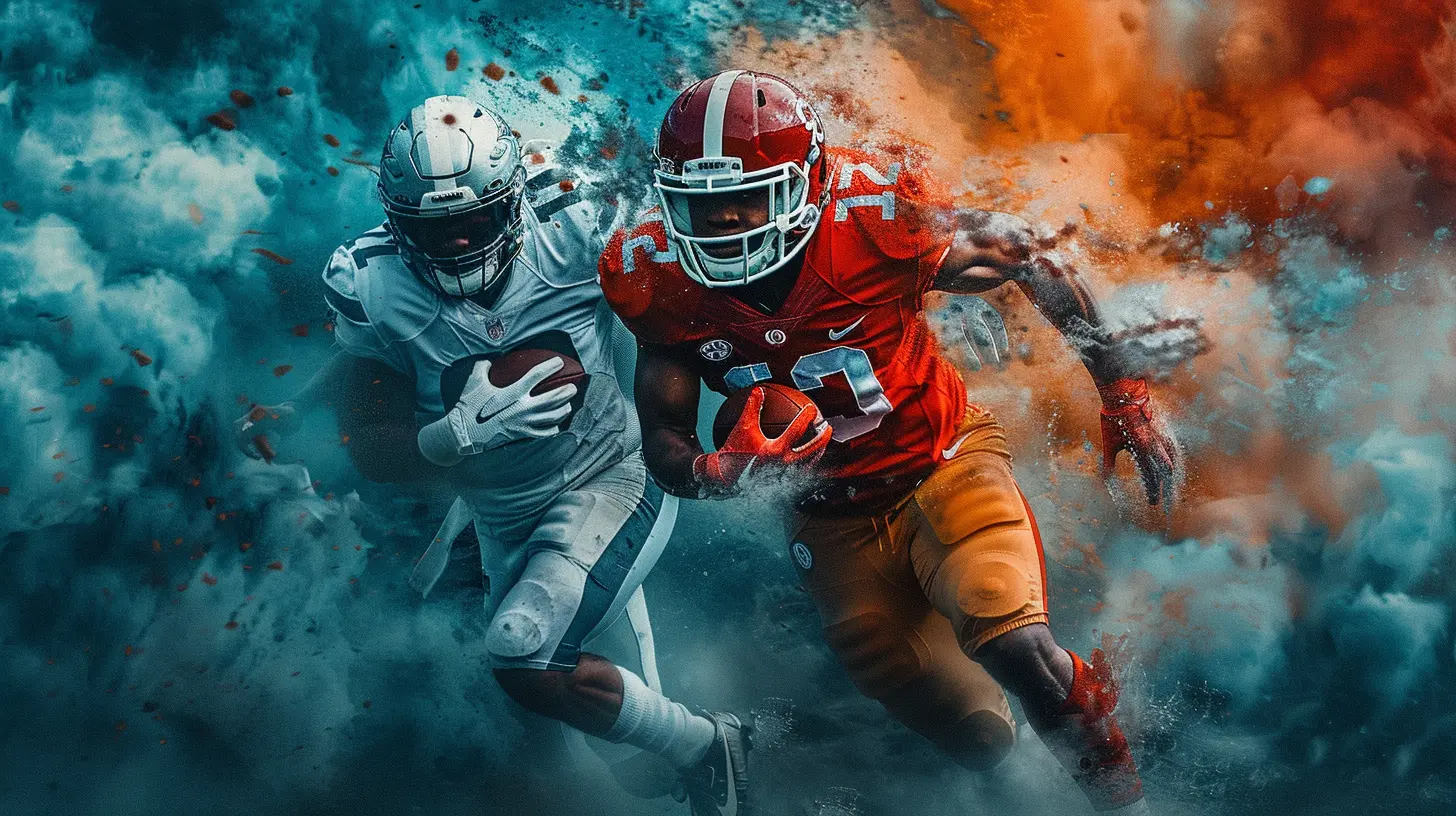The Battle for the Flanks: Wingers and Fullbacks in the Spotlight
12 July 2025
In modern football, the spotlight doesn’t always shine brightest on the strikers or the midfield maestros. Sometimes, the real action—the kind that decides games—happens on the edges of the pitch. That’s right, we’re talking about the flanks. The thrilling tug-of-war between wingers and fullbacks has morphed into one of the most electrifying duels in the beautiful game. It's speed vs. strategy, flair vs. discipline, attack vs. defense—all happening in a narrow strip of grass that rarely gets the love it deserves.
Today, we’re diving into the battlefield of the flanks and shedding light on the unsung heroes and pacey showstoppers who run that line like their boots are on fire. Buckle up, because this one’s going wide—literally!
What is the Flank in Football, Anyway?
Let’s kick things off with the basics. The flanks refer to the wide areas on either side of the pitch—from the halfway line down to the opponent's goal line. It’s where the wingers ride the line like a rollercoaster and the fullbacks hustle up and down like it’s a cardio class.Whether it’s a mesmerizing dribble down the line or a game-saving tackle near the corner flag, the flanks are where intensity lives. And in today’s era of high-octane football, these areas are more important than ever.
Wingers: The Creative Chaos-Makers
Born to Attack
Wingers are the artists of the field—the fearless dribblers, the cross-slinging magicians, the players who bring crowds to their feet. From legends like Ryan Giggs and Arjen Robben to modern-day speedsters like Kylian Mbappé and Vinícius Jr., these guys are built to destroy defenses.Their mission? Simple. Get the ball, burn the fullback (preferably with a double stepover), and either cut inside to shoot or whip in a deadly cross. Sounds fun, right? But it’s way more complex than flashy footwork.
The New-Breed Winger
Back in the day, wingers hugged the touchline, stuck to chalk on their boots, and lobbed in crosses all day long. But today’s wingers? They’re multi-functional weapons. They can play as inverted forwards (hello, Mo Salah), false nines, or even midfielders.They’re tactically smarter, defensively involved, and endlessly adaptive. Coaches demand more, and these wide-shot soldiers deliver.
Fullbacks: The Tireless Warriors
More Than Just Defenders
Now let’s switch gears. Fullbacks have undergone a glow-up. Once seen as the defensive shadows of center-backs, today’s fullbacks are responsible for an insane amount of running, covering, and—wait for it—attacking.Think Trent Alexander-Arnold or João Cancelo. These aren’t your average defenders—they’re part-time midfielders, long-range pass wizards, and even chance creators. Fullbacks now start attacks, not just end them.
Defensive Backbone, Offensive Spark
Their job is complicated. First, they have to stop the winger—who usually happens to be ridiculously fast and tricky. Then, they have to instantly transition into attack mode, overlapping past their own winger, and delivering crosses or slip passes.And they do this again and again. It’s a sprint, recover, and repeat lifestyle. Not for the faint-hearted.
The Flank Duel: Winger vs. Fullback
Here’s where it gets juicy. The matchup between a winger and a fullback is one of the most consistent and personal duels in football. It’s a chess match, a 90-minute battle of skills, smarts, and stamina.Speed and Space
Speed is a huge factor here. Wingers want to get behind defenders, and fullbacks need to close that door—fast. This battle over space is relentless and often decides the flow of the game. If the winger gets the better of the fullback, chaos ensues. If the fullback dominates, it shuts down a huge creative outlet.Brains Over Brawn
But it’s not just about pace. Positioning, anticipation, and reading the opponent’s moves become vital. A smart winger knows when to fake and cut inside; a clever fullback knows exactly when to pounce or back off. It’s a mind game, with the touchline as the chessboard.The Tactical Evolution: Why the Flanks Matter More Than Ever
You’ve probably noticed that modern formations—like 4-3-3, 3-4-2-1, and variations of the 4-2-3-1—all feature prominent wide roles. That’s not by accident.Stretching the Field
Using the flanks stretches the opposition, pulling defenders out and creating space in central areas. A sharp winger or attacking fullback opens up the entire shape of a team.Remember that gorgeous Liverpool goal where the fullback crossed it to the opposite fullback to score? That doesn’t happen without intelligent flank use.
Press-Breaking & Counter-Attacks
When under pressure, using the wings helps teams escape high-press situations. And on the flip side, lightning-fast counterattacks often begin with a winger tearing down the line after a quick switch. One sharp pass through the channels, and boom—you’re in on goal.Legendary Flank Duos: When Chemistry Sparks Magic
Let’s take a walk down memory lane and appreciate some iconic winger-fullback duos.- Dani Alves & Lionel Messi (Barcelona): Alves ran like a man possessed, creating overlap after overlap for Messi to cut in and do his magic.
- Ashley Cole & Eden Hazard (Chelsea): Cole’s defensive awareness allowed Hazard the space to go wild offensively.
- Marcelo & Cristiano Ronaldo (Real Madrid): If you ever saw this pair dominate the left wing, you witnessed destruction at its finest.
When these pairings click, it’s poetry in motion.
Skills That Make the Difference on the Flanks
Want to dominate the flanks, whether you're playing on the street or dreaming of stardom? Here are the must-have skills:For Wingers:
- Dribbling under pressure – Beat your marker without panicking.- Change of pace and direction – It’s not how fast you are; it’s how unpredictably you move.
- Crossing or cutting in – Know when to deliver and when to go for goal.
- Stamina – You’ll be running like a madman all game.
For Fullbacks:
- 1v1 defending – Timing your tackles is crucial.- Recovery speed – Get back fast after an overlap.
- Crossing accuracy – Yes, fullbacks are expected to deliver assists too.
- Positional sense – Stay switched on, always.
Mentality Matters: Grit, Guts, and Glory
Let’s not forget—playing on the flanks requires character. You’re isolated. You’re under constant pressure. One mistake and you’re exposed. But that’s also what makes these roles so thrilling.It’s about constantly battling, never giving up, and learning from every duel. The best wide players aren’t just technically gifted—they’re mentally tough.
The Future of Flank Play
With football constantly evolving, flank play isn’t going anywhere—it’s only getting bigger. Expect to see more fluid systems, overlapping center-backs (yes, that’s a thing now), and hybrid players who can do it all.We might even see the rise of inverted fullbacks, who drift into midfield instead of overlapping wide. Think Pep Guardiola’s tactical experiments—it’s a brave new wide world out there.
Final Whistle: Why the Flanks Deserve Respect
So the next time you're watching a match, don’t just watch the goals or the flashy strikers. Look at the touchline. Watch that winger trying to skin his marker. See that fullback charging back to stop a counter. That’s where real football lives—raw, relentless, and beautiful.The battle for the flanks is a constant test of will, skill, and endurance. It's where legends are made unseen, and where the game often turns in one daring sprint or one brilliant tackle. Whether you're a player, coach, or fan, appreciating the genius and grind of flank play adds a whole new layer of love for the game.
So hats off to the wingers and fullbacks—the kings and queens of the sidelines, the heartbeat of width, and the soul of speed.
all images in this post were generated using AI tools
Category:
Game AnalysisAuthor:

Preston Wilkins
Discussion
rate this article
1 comments
Alvin Bowers
This article brilliantly highlights the crucial roles wingers and fullbacks play in modern football. Their ability to create width, deliver crosses, and contribute defensively is often overlooked. As the game evolves, the impact of these players becomes more evident, making them essential to any team's success. Great read!
July 27, 2025 at 10:59 AM

Preston Wilkins
Thank you for your insightful comment! I'm glad you found the article highlights the vital roles wingers and fullbacks play in modern football. Their contributions truly are essential to a team's success!


